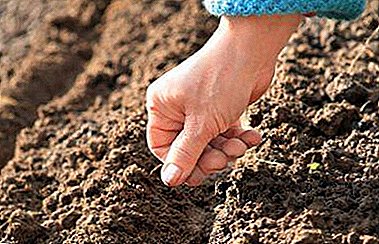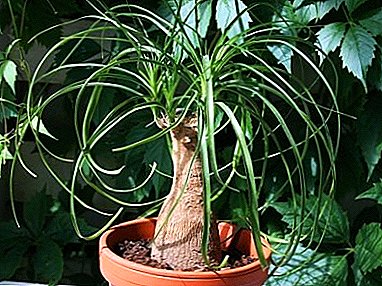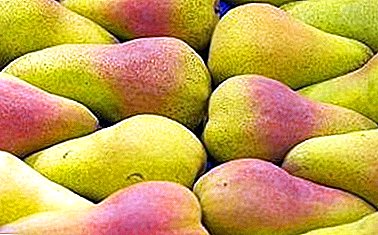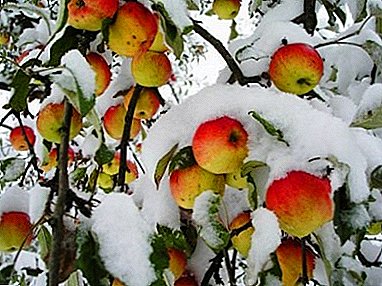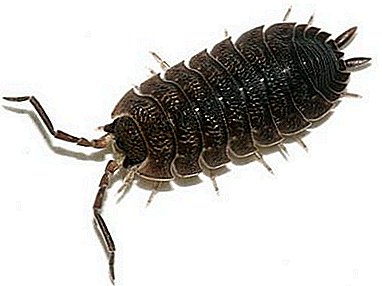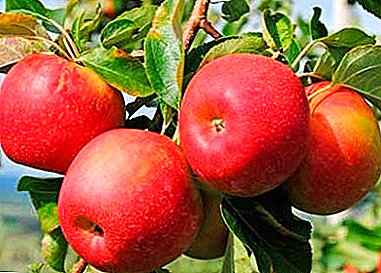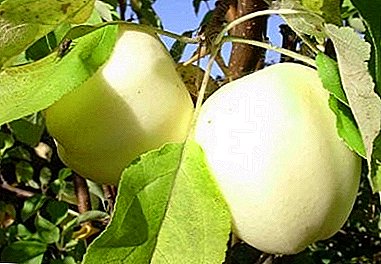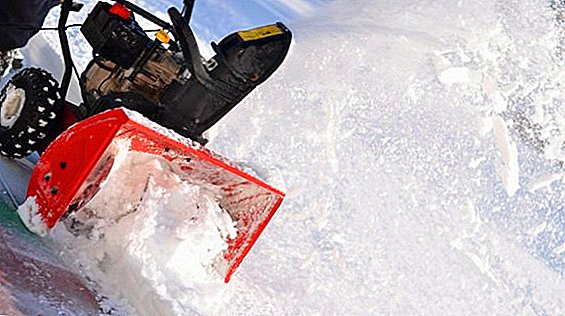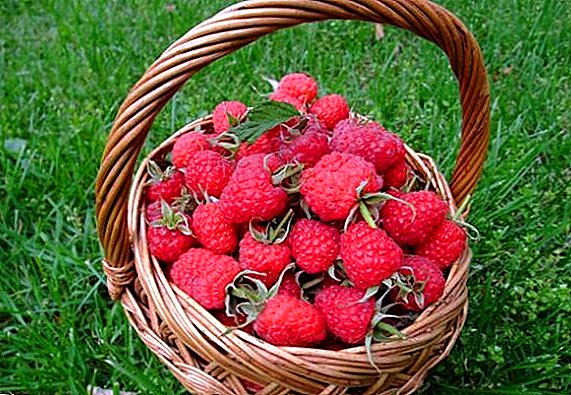 We all love to eat delicious, vitamin-rich berries in the summer.
We all love to eat delicious, vitamin-rich berries in the summer.
One of the most common and favorite raspberry varieties among summer residents is the Pride of Russia.
In our article we will tell you what this variety is and how to care for the bushes.
Description
Raspberry Pride of Russia is often found in the suburban areas, and the description of the variety is familiar to all amateur gardeners. We offer you to familiarize yourself with the characteristics of this type of berry.
Important! Raspberries should be planted only in a well-lit area - a plant planted in the shade will yield a small crop consisting of savory fruits.
The bush is rather compressed, strong and powerful, its height is about 1.8 meters. Every season there is a formation of a set of shoots that you should definitely delete. The plant has straight, thick stems, and there are no thorns on the replacement shoots.
Each branch can have up to 30 fruits. Foliage has a dark green color. On the tips of the shoots leaves form rosettes.
Fruits are large in size, the average weight is 12 g. The berries are dark red in color, velvety, in shape very similar to a cone. They have good juiciness and a small amount of seed, a sweet-sour taste and a slight aroma.
Check out such large-fruited raspberry varieties as "Polka", "Hussar", "Yellow Giant", "Caramel", "Hercules".
The pride of Russia has medium maturity, fruiting occurs from July to August. Usually harvesting consists of 5-6 stages. One bush can give about 5 kg of berries. Even after ripening, the fruits do not fall to the ground, and their removal happens easily, without effort. Berries have a small shelf life and an average degree of transportability.
Raspberry planting technology
Raspberry large-fruited Pride of Russia is planted in the autumn period - in September or October. In rare cases, the landing can be transferred to March. The event, held in the fall, has certain advantages, for example, the plant will be able to thoroughly take root. However, we must bear in mind that for the winter raspberries should definitely be covered.
The event, held in the fall, has certain advantages, for example, the plant will be able to thoroughly take root. However, we must bear in mind that for the winter raspberries should definitely be covered.
Learn more about fall planting raspberries.
It is necessary to prepare the soil for planting bushes in advance: in 3-4 months. The site should be freed from weeds, dig the ground, fertilize it. At 1 square meter of soil will need:
- potassium - 25 g;
- manure - 5 kg;
- superphosphate - 60 g.

Did you know? Russia is the leader among all countries in raspberry cultivation.
Planting raspberries includes the following steps:
- Before planting bushes, it is necessary to put compost into the soil at the rate of 7 kg per 1 sq. Km. meter.
- Then you need to dig holes. The distance between them should be 60-70 cm, size - 50x50 cm. It is also worth leaving a distance between the rows - about 1-1.5 meters.
- In each hole for 2/3 you need to pour fertile soil, place the seedling. It is necessary to gently straighten the root system in the pit, sprinkle lightly with soil. Root neck should not stick out of the ground.
- Each bush should be carefully watered: 3-4 liters per plant. Also carried out mulching with sawdust or humus.

At this process of planting raspberries completed, then you need to provide the plant with careful care.
What the variety loves: care features
In order to grow healthy and high-quality raspberry on Russia's summer cottage, Russia's Pride, it is necessary to plant properly and provide proper care.
It is useful to learn about the proper reproduction of raspberries, and the rules of care for this plant.
Watering
This type of raspberry loves moisture, so watering should be carried out 4 times a season:
- before flowering begins;
- in the period of ripening berries;
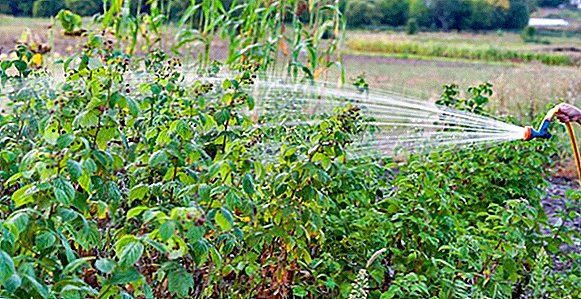
- after the last harvest;
- before the first frost.
Important! In order to fully provide nutrients to the bushes, it is necessary to feed them every year. Reducing the frequency of this event will negatively affect the amount of the crop.
If you do not have the opportunity to introduce a drip system, watering can be done with a watering can or with a hose with a sprayer.  The procedure is recommended early in the morning or in the evening. Watering raspberries with scorching sun can cause burns on the foliage.
The procedure is recommended early in the morning or in the evening. Watering raspberries with scorching sun can cause burns on the foliage.
Top dressing
The volume of the harvest and the quality of the berries depend on how timely you are at this event.
Feeding is carried out at such a time:
- in the first year of life: you can use the slurry mixed with water (a ratio of 3: 2, per bush - 2.5 l);
- in the spring - it is necessary to fertilize the earth with manure, potassium salt, superphosphates;
- in the autumn - after harvesting, it is necessary to feed with the use of ashes and potassium-phosphorus preparations;
- In early spring - fertilizing is carried out with nitrogen fertilizers.
Pruning
The trimming procedure must be carried out 3 times per season:
- at the end of March: it is necessary to cut off shoots that are dead and damaged, while healthy ones should also be shortened to the upper buds.
- after bud breaks, the branches are shortened by 13-15 cm. This is necessary to increase the yield.
- The last pruning is performed 2-3 weeks before the onset of cold weather. It is necessary to remove, cut off under the root shoots, which bear fruit for 2 years, as well as old, healed and too young plants.

If the bushes have grown too abundantly, and the necessary distance between them is no longer visible, the soil is dug up to the depth of a shovel, and it is not recommended to do this closer than 30 cm to the plant.
How to prepare the plant for winter
Starting activities to prepare the plant for the winter period is in the middle of November. Between rows, stakes are driven in, wire is pulled at a distance of 30 cm from the ground. Then you need to bend the bushes to it so that an arc is formed. Tie them with a strong thread. Over the bushes need to pull the agrofiber. Such a structure is an improvised greenhouse and will help protect the plant from frost.
Pros and cons varieties
Like any variety, raspberry Russia's Pride has its advantages and disadvantages.
The advantages of the variety include:
- bountiful harvest of tasty large berries;
- resistance to frost (up to -30 ° C);
- the opportunity not to remove the berries for a long time, since they do not crumble;
- availability of resistance to such diseases as anthracosis, botrytis, chlorosis.
Among a small number of minus varieties are the following:
- low sugar content of fruits;
- the need to constantly conduct top-dressings to get a quality crop;
- high sensitivity to lack of moisture.

Variety Pride of Russia has more advantages than disadvantages, and therefore is particularly popular among summer residents.
Breeding rules
Plant reproduction can be performed using root shoots or apical cuttings. The cutting method is also used. Raspberries quickly get accustomed, and as a result is capable of producing a large number of processes that can be used as planting material. Consider some ways in more detail.
Did you know? Fruit acids contained in raspberries, can help in the fight against hangover. Therefore, in the morning after the feast is recommended to eat a handful of berries.
- Reproduction using root offspring. It is necessary to pour 1 liter of water into the pit, lower the scions into the talker. If the weather is sunny, the bushes need to create an artificial shadow for a couple of days. After 10-14 days, the intensive growth of seedlings begins, and by the time they need to dig up planting material, they will have reached the required size.

- Reproduction by cuttings. The event is held in spring or autumn. It is necessary to retreat 20 cm from the bush and dig out the ground. Healthy roots with a diameter of more than 2 mm cut into pieces containing 1-2 buds, a length of 10 cm. The cuttings need to be planted in loose soil.
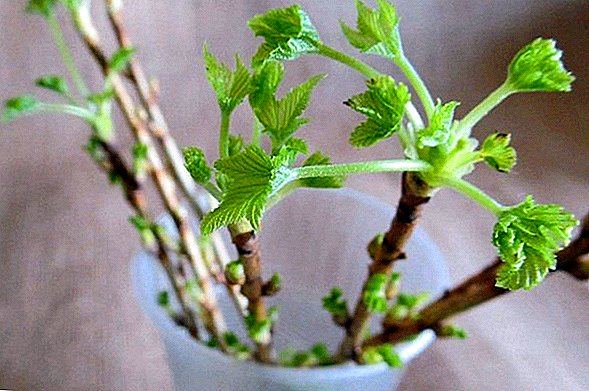
The raspberry variety Russia's Pride draws the attention of tasty large berries and ease of care. Having landed several bushes on your plot, you can always enjoy the pleasant taste of the fruit.






